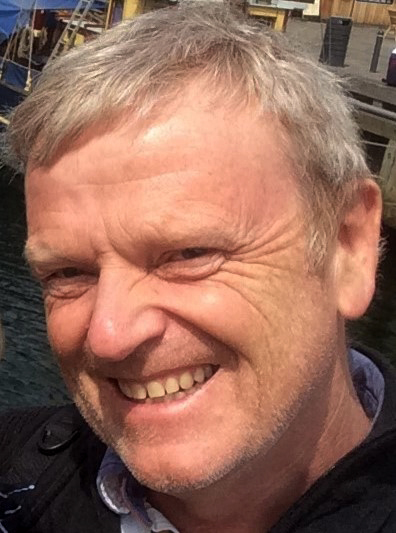Martin Forsey from The University of Western Australia gave a CHEF talk
Associate Professor Martin Forsey from The University of Western Australia, gave a CHEF talk 12 June 2017 at Aarhus University with the title "Digital Backgrounds, Active Foregrounds: Teaching Large Classes in Late Modernity".

Drawing on four key themes, digital technologies, active pedagogies, undergraduate classrooms and socio-cultural change, Martin Forsey presented his experience with the development of the first open online course at The University of Western Australia in Perth.
Nowadays, academic staff are required to be both digitally sophisticated in the learning and teaching spaces of universities and socially, culturally and pedagogically adept to optimize learning for all students. Martin Forsey points to a dialogical relationship between technological development and socio-cultural change; neither one alone is able to improve student learning (experience). He appeals to academic staff to take up the challenge not only to engage with the digital classroom more fully, but also to take an active part in shaping the process of social change.
Through his ethnographic exploration of the experience of learning and teaching in an undergraduate classroom Martin Forsey realized that as he moved his teaching practices towards active pedagogies and far beyond the so-called traditional modes of content delivery, he was in fact ‘flipping the sociology classroom’ (Forsey et al., 2014). He found it was important to get the balance right between information-transmission, face-to-face in-class activities that both engage students in academic conversations and establish social relationships, and a requirement that students complete pre- and/or post-class activities to fully benefit from in-class work.
From his experience with a range of students in different disciplines and class sizes, Martin Forsey concludes that many academics will be concerned about:
- the use of time, theirs and the students
- that the students will not learn everything
- that time will be spent on technologies rather than content.
It became clear that setting up a flipped classroom for the first time does take time. However, when the technologies are in place and the right tools are used, then the time of both academics and students is spent more effectively.
As for the concern that students be given all the knowledge they need through transmission of content, he found that it was important to make requirements and expectations clear and link to authentic work, for example actual research projects. By building in room for peer feedback and provision of support of learning achievement through a range of digital technologies the student learning experience becomes relevant and productive.
Tips for designing the flipped classroom
The following are Martin Forsey’s tips for designing the flipped classroom:
- Decide early on how you are going to assess students and what you want them to do as part of being in the class
- Think seriously about use of active, original research as a significant part of assessed work
- Make the tutorials worth something – indicate to students how important they are to learning and how you expect them to participate fully in the learning practices
- Make sure questions you pose in class are answerable, require engagement with the readings/activities AND/OR are answerable from student experience.
- Workshop the key skills – research, writing, addressing questions, posing questions, etc.
The talk was given at the Centre for Teaching Development and Digital Media, Aarhus University, Aarhus. It was streamed to Campus Emdrup, for participants from the School of Education and simultaneously linked to the Centre for Knowledge, Culture and Society, Bristol University, UK.
